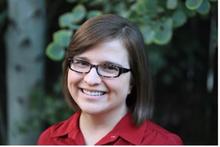Amanda Koepke
Title of Talk: From Fire Debris to Atomic Clocks: An Early-Career Statistician’s Experience Doing Research in a Government Lab
ABSTRACT:
Working in a government lab provides exposure to many exciting research opportunities. As a statistician at NIST, I apply my skills to a variety of interesting applications, two of which I detail here. First, the presence of ignitable liquid (IL) vapors in fire debris from structural fires can be used to determine if arson was a potential cause. NIST chemists are exploring a promising new technique for detection of IL residue, dynamic vapor microextraction (DVME). To understand optimal settings for the DVME system, we conducted an 11-factor sensitivity analysis experiment, finding the DMVE settings that most influence sample collection and that the DVME system is relatively robust to different fire debris sampling scenarios. Second, to more precisely measure time NIST physicists are exploring optical atomic clocks, comparing measurements from three clocks over multiple days. However, variability between measurements taken on different days is greater than expected based on the within-day variabilities. Combining these disparate measurements is a key task in measurement science and is often done using random-effects models (REMs). Motived by the atomic clock measurements, in this work I compare method performance for different frequentist and Bayesian approaches for REM parameter estimation. The methods are compared using a variety of simulated datasets that vary in size and in the extent of their adherence to the assumptions of the usual REM. Results show that while the frequentist estimators perform well when the sample size is large (N≥20), for more realistic settings the Bayesian estimators perform best.
Keywords: forensic science, interlaboratory studies, key comparisons, Bayesian, statistical collaboration
BIO:

Amanda Koepke is a Mathematical Statistician at the National Institute of Standards and Technology. For the past six years she has collaborated with engineers, physical scientists, and other statisticians on multiple projects at NIST, NOAA, and NTIA. Prior to arriving at NIST, Amanda obtained a B.A. in Mathematics and Statistics and a B.A. in Psychology from Texas Tech University in 2008. In 2014 she received her Ph.D. in Statistics from the University of Washington and then completed a year-long postdoctoral research fellowship at the Fred Hutchinson Cancer Research Center.

